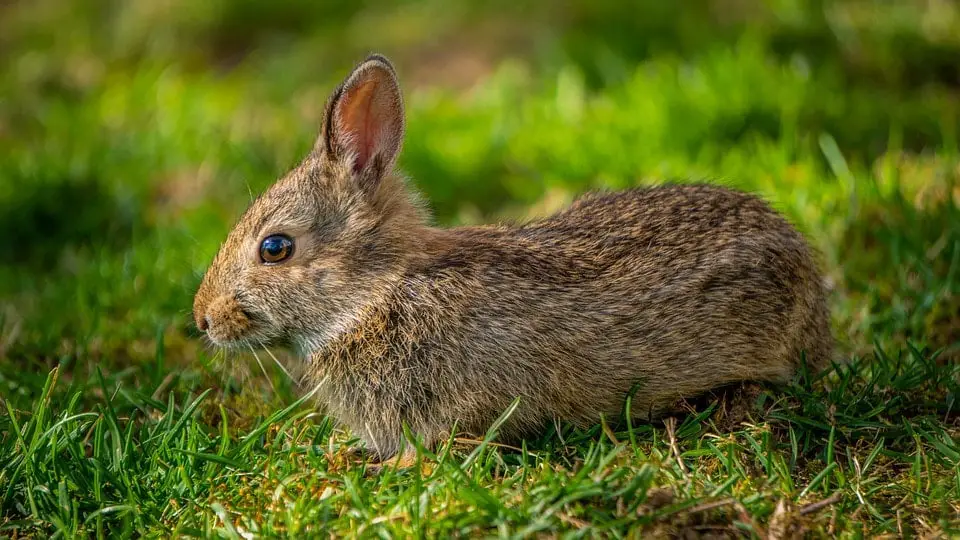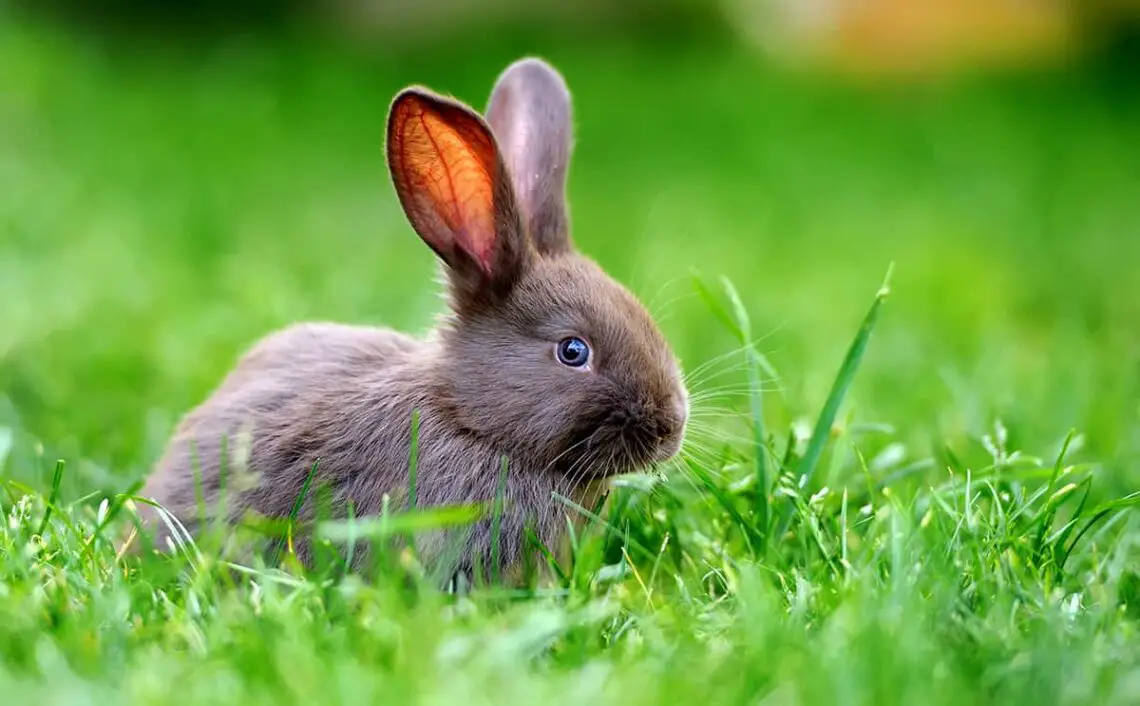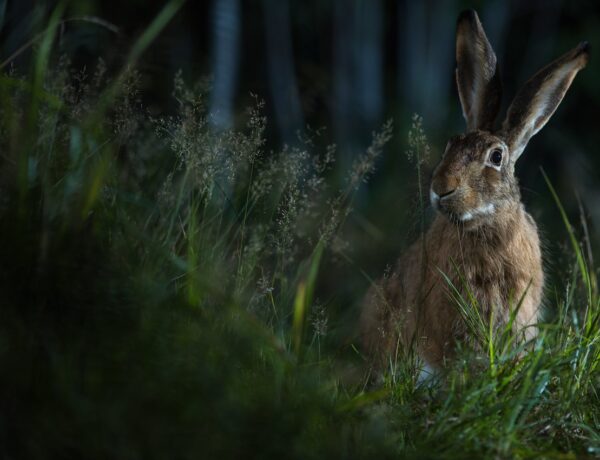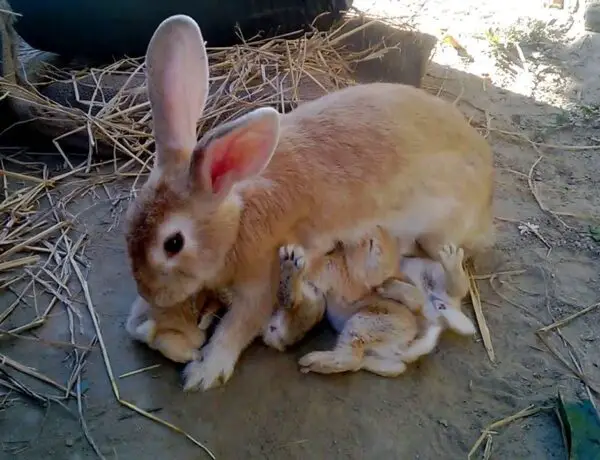Introduction
What Color Are Rabbits: “Rabbits, those enchanting creatures that inhabit fields, forests, and households alike, exhibit a captivating spectrum of colors within their fur. From the purest of whites to the deepest of blacks, and a myriad of shades in between, the coloration of rabbits is a testament to the wonders of nature’s diversity. In this exploration, we venture into the enchanting world of rabbit colors, unveiling the stunning variations and patterns that adorn these furry companions, each a testament to the genetic tapestry that shapes their appearance.”
The color of a rabbit’s fur is primarily determined by its genetic makeup. Genes control the production and distribution of pigments in the fur. There are multiple genes responsible for various aspects of rabbit coloration, including the presence of pigments (melanin) and the distribution of pigments across the fur. Some rabbits have solid colors, where their fur is entirely one shade. Common solid colors include white, black, brown, gray, and shades in between. For example, the Dutch rabbit is known for its distinctive black and white solid pattern.
Rabbit eye color can also vary. While brown eyes are most common, some rabbits have blue, gray, or even red eyes. Eye color is often linked to coat color genetics. The chinchilla effect is a genetic variation that creates a silvery, pearl-like appearance in rabbit fur. It’s characterized by a bluish-gray body color with white underparts. Chinchilla rabbits are highly prized for their distinctive fur. It’s important to note that a rabbit’s fur color can change as it matures. Baby rabbits, known as kits, often have lighter fur colors that darken as they grow older.

What is the rarest rabbit color?
The rarest and highly sought Flemish giant rabbit is the black or blue variety. Grey and sandy-colored varieties are the most common and popular pet Flemish giant rabbits. There are some broken or mismatched coat colors, but these colors are often disqualified from shows and are not pure Flemish giant rabbits.
Albino Rabbits
One of the rarest and most striking rabbit colors is albinism. Albino rabbits are characterized by their pure white fur and striking pink or red eyes. This coloration results from a genetic mutation that prevents the production of melanin, the pigment responsible for coloring the skin, eyes, and fur of most animals. Due to their striking appearance, albino rabbits are highly sought after by collectors and breeders. However, the occurrence of true albino rabbits is exceptionally rare in the wild, and they are more commonly found in captivity.
Himalayan Rabbits
Himalayan rabbits are another rare color variety. They are known for their elegant and distinctive coloration, which consists of a creamy white body with dark points on their ears, face, paws, and tail. The points can be various shades, including chocolate, black, blue, and lilac. This unique coat pattern is caused by a recessive gene, and Himalayan rabbits are cherished for their captivating appearance.
Chinchilla Rabbits
Chinchilla rabbits boast a silvery-gray or bluish-gray coat that resembles the fur of chinchilla rodents, hence their name. This stunning coloration is achieved through a combination of factors, including the presence of the chinchilla gene and a specific pattern of lighter and darker bands on their fur. Chinchilla rabbits are not only admired for their rarity but also for their soft and luxurious fur, making them highly valued in the fur industry.
Harlequin Rabbits
Harlequin rabbits are known for their striking and unique pattern, which features contrasting patches of two distinct colors. They typically have a checkerboard-like appearance, with patches of color on a white background. The most common color combination for harlequin rabbits is orange and black, but other combinations like blue and lilac also exist. This distinctive pattern is governed by a complex set of genetic factors, making harlequin rabbits a rarity among their kind.
English Angora Rabbits
While not strictly a color, English Angora rabbits are famous for their incredibly rare and luxurious wool. These rabbits produce some of the finest and softest fur in the world, which is highly sought after by fiber artists and enthusiasts. The color of their wool can vary, including white, cream, gray, chocolate, and black. English Angoras are cherished not only for their rarity but also for their contribution to the world of fiber arts.
Why are rabbits different colors?
A rabbit’s coat color is determined by several different genes that control color base, color density, pattern, extension of dark pigment, spotting and silvering. The B gene controls the coat color base. The D gene controls the density of the coat color.
Genetic Factors
At the core of rabbit coloration lies a complex interplay of genetic factors. The primary determinant of a rabbit’s color is its genetic makeup. Rabbits inherit their coat color from their parents through a combination of genes that control the production and distribution of pigments in their fur.
Melanin: The Key Pigment
The primary pigment responsible for coloring the skin, fur, and eyes of rabbits is melanin. Melanin comes in two main types: eumelanin, which produces black and brown colors, and pheomelanin, responsible for red and yellow hues. The specific genes governing the production of these pigments determine a rabbit’s base color.
Dominant and Recessive Genes
Rabbit coat colors are often governed by a combination of dominant and recessive genes. Dominant genes are more powerful and can override the effects of recessive genes. When a rabbit inherits two dominant genes for a particular color, it will express that color. However, if it inherits two recessive genes for a different color, it will display that color instead.
What colour is rabbit skin?
Bunnies are born nearly hairless but their skin reflects the shade of their adult coats. Bunnies with light coats such as white or cream will have pink skin, while black and blue-based bunnies will have black skin. Look for blotches in the skin indicative of broken-coated bunnies.
The Natural Color of Rabbit Skin
Rabbit skin, in its natural state, is typically a pale shade of pink or beige. This hue is the result of the underlying blood vessels and capillaries that supply nutrients and oxygen to the skin tissue. The semi-translucent nature of rabbit skin allows these blood vessels to be partially visible, contributing to its pale appearance.
Skin Pigmentation
Like many animals, rabbit skin contains cells called melanocytes, which are responsible for producing melanin—the pigment responsible for skin, hair, and eye color in animals, including humans. In the case of rabbits, melanin production primarily influences the color of their fur, eyes, and other visible features rather than their skin.
Variation in Skin Color
While the natural color of rabbit skin is typically pale, there can be some variation based on factors such as breed and age. For example:
Breed Differences: Some rabbit breeds may have slightly different skin coloration due to their genetic makeup. However, these variations are often subtle and may not be readily noticeable.
Age-related Changes: As rabbits age, the color of their skin may change slightly. Older rabbits may develop a slightly darker or more mottled appearance due to changes in their skin’s elasticity and pigmentation.
Importance of Skin Health
Although rabbit skin color may not be as prominent as their fur, it is essential to the overall health and well-being of these animals. The skin serves as a protective barrier against external elements, pathogens, and injuries. Maintaining healthy skin is crucial to preventing skin issues, infections, and discomfort in rabbits.
Fur Color vs. Skin Color
It’s important to note that a rabbit’s fur color and its skin color are not always directly related. While the skin provides the foundation for fur growth, the pigmentation of the fur itself is determined by a separate set of genetic factors, as discussed in the previous article.
Can rabbits be pink?
The British breed standard calls for Lilac rabbits to be an “even pink shade of dove colour” over the entire body, with matching eye colour.
Natural Rabbit Colors
Rabbits exhibit a remarkable variety of natural fur colors, but these colors are typically within the spectrum of whites, grays, browns, blacks, and variations thereof. These hues are the result of genetic factors that control the production of melanin, the pigment responsible for coloring the skin, eyes, and fur of most animals.
Albinism and Pink Eyes
One of the rarest and most striking colorations in rabbits is albinism. Albino rabbits are known for their pure white fur and striking pink or red eyes. This distinctive appearance results from a genetic mutation that prevents the production of melanin. While albino rabbits do have pink eyes, their fur is white rather than pink.
Skin vs. Fur Color
It’s essential to distinguish between a rabbit’s skin color and its fur color. A rabbit’s skin is typically a pale shade of pink or beige, and this skin color may be visible through the semi-translucent fur in certain areas, especially on the ears and around the eyes. However, this natural skin color should not be confused with the color of the fur itself.
Potential for Pink Fur
In nature, rabbits do not naturally possess pink fur as part of their standard genetic makeup. However, it is possible for rabbits to temporarily appear pink if they come into contact with certain substances or dyes that can color their fur.
Temporary Pinkness
In some cases, rabbits may encounter substances that temporarily stain their fur a pinkish color. This can occur if a rabbit gets into a source of non-toxic, water-soluble dye or pigment. For example, a rabbit might roll in or nibble on pink flowers, berries, or colored substances, resulting in temporary pink fur. It’s crucial to ensure that any substances a rabbit encounters are non-toxic and safe for their consumption.
Why are rabbits color blind?
Compared to humans, rabbits have more rods than cones in their retinas. This means rabbits can see better than we can in the dark but are limited to two-color vision. For example, they can distinguish between green and blue but cannot see red. Rabbits aren’t the only animals that have trouble distinguishing colors.
The Basics of Rabbit Vision
Rabbits, like many other mammals, have a visual system that relies on the perception of light and shadows to navigate their surroundings. However, their vision differs significantly from human vision in several key aspects.
Color Blindness in Rabbits
Color blindness, or more accurately, color vision deficiency, is a condition in which an organism cannot perceive certain colors or sees them differently from how a typical observer would. In the case of rabbits, they are considered to have dichromatic vision, which means they can perceive only two primary colors: blue and green.
Limited Color Receptors
The reason behind rabbit color blindness lies in the composition of their retinas. The retina is the part of the eye responsible for detecting light and converting it into visual information. In humans and many other animals, there are three types of color receptors, called cones, that are sensitive to different wavelengths of light and allow for trichromatic vision (perceiving three primary colors: red, green, and blue). In contrast, rabbits have only two types of cones, sensitive to blue and green wavelengths of light.
Adaptation to Natural Habitat
Rabbit color blindness is believed to be an evolutionary adaptation to their natural habitat. In the wild, rabbits are prey animals, and their vision is optimized for detecting predators and finding suitable food sources. The ability to differentiate between shades of green and blue, which are prevalent in their environment, helps them identify potential threats and sources of nourishment.
Enhanced Night Vision
While rabbits may lack the ability to see a full range of colors, they compensate with excellent night vision. Their eyes are adapted to low light conditions, making them well-suited for their crepuscular and nocturnal activities. This adaptation enhances their chances of survival in the wild, where many of their predators are also active during the twilight hours.
Rabbit Behavior and Color Blindness
Rabbit color blindness has a profound influence on their behavior. They rely heavily on other sensory cues, such as scent and hearing, to navigate their surroundings and communicate with other rabbits. This heightened reliance on non-visual senses further underscores their evolutionary adaptation to their environment.
What is the most rare rabbit?
Reclassified as Nesalogus netscheri nineteen years later, the animal—commonly known as the Sumatran short-eared rabbit—has been infrequently recorded in the years since. Just thirteen museum specimens are known to exist, all of which were apparently collected in the first two decades of the 20th century.
The Concept of Rarity in Rabbits
Rarity in rabbits can be a subjective matter, as it often depends on various factors, including geographic location, breeding practices, and the specific criteria used to define rarity. What might be considered rare in one region could be more common in another. Nevertheless, certain rabbit breeds and varieties are universally recognized for their extreme rarity.
The Most Rare Rabbit: The Amami Rabbit
One of the most rare rabbits in the world is the Amami rabbit (Pentalagus furnessi), also known as the Ryukyu rabbit. This elusive and enigmatic species is native to the Amami Islands in Japan. The Amami rabbit is not only one of the rarest rabbit species but also one of the rarest mammal species globally.
Characteristics of the Amami Rabbit
The Amami rabbit is characterized by its small size, short ears, and dense, dark fur. It is primarily nocturnal and arboreal, meaning it spends much of its time in trees. This rabbit has adapted to its forested island habitat, where it is believed to feed on leaves, bark, and various plant materials.
The Threat of Extinction
The rarity of the Amami rabbit is primarily attributed to habitat loss and predation by invasive species, such as feral cats. With an estimated population of fewer than 2,000 individuals, the Amami rabbit is classified as a critically endangered species by the International Union for Conservation of Nature (IUCN). Intensive conservation efforts are underway to protect and preserve this unique rabbit species.
What is the most popular rabbit color?
For colour preference, there are no surprises here as most people preferred the pretty two-tone or multi coloured rabbits to the more plain colours, with white rabbits clearly coming out on top as the most disliked colour, followed by agouti and black.
White: The Timeless Classic
White rabbits, with their pure and clean appearance, have always been a favorite among rabbit enthusiasts. This classic color symbolizes innocence and grace, making white rabbits a sought-after choice as pets. Many rabbit breeds, such as the New Zealand White and the Himalayan, exhibit this pristine coloration.
Black: A Symbol of Elegance
Black rabbits exude elegance and sophistication. Their sleek, jet-black fur is often associated with mystery and beauty, making them a popular choice for those who appreciate a touch of refinement in their pet rabbits. Breeds like the American Sable and the Havana Rabbit showcase variations of black fur.
Grey: The Versatile Shade
Grey rabbits come in various shades, from light silver to deep steel grey. This versatility in coloration has made grey rabbits a common choice among rabbit enthusiasts. The Flemish Giant and the Chinchilla Rabbit are examples of breeds that feature stunning grey coats.
Brown: Earthy Warmth
Brown rabbits, often referred to as agouti, encompass a wide range of earthy tones. Their natural, warm appearance gives them a sense of coziness and connection to the natural world. Breeds like the Rex and the Mini Rex exhibit beautiful brown fur.
Spotted and Harlequin Patterns: Playful and Unique
Rabbits with spotted or harlequin patterns add a playful and unique touch to the rabbit world. These patterns are often a combination of colors like white with black or other contrasting hues. The Harlequin Rabbit breed, for instance, showcases striking color patterns that are a delight to behold.
Albino: A Rare and Captivating Choice
While not as common as some other colors, albino rabbits are highly sought after for their unique and striking appearance. Albino rabbits feature pure white fur and distinctive pink or red eyes due to a genetic mutation that prevents the production of melanin, the pigment responsible for color.
Rex Fur Texture: A Unique Appeal
In addition to color, the texture of a rabbit’s fur can also influence its popularity. Rex rabbits have dense, velvety fur that comes in various colors, adding an extra layer of appeal for those seeking a soft and luxurious companion.
Are GREY rabbits rare?
The Carmagnola Grey rabbit is a rare breed from Italy, almost extinct. It is a large chinchilla-colored breed bred for meat. The coat of the Carmagnola Grey exhibits chinchilla coloration. The average weight of an adult Carmagnola Grey is 7.7–9.9 pounds (3.5–4.5 kg).
The Range of Grey
Grey is a broad color category that encompasses a spectrum of shades, from light silver to deep steel grey. Within this range, there are several variations and patterns, each contributing to the unique appearance of grey rabbits. The prevalence of grey in rabbits can be attributed to both genetics and selective breeding.
Natural Agouti Pattern
One of the most common forms of grey in rabbits is the natural agouti pattern. This pattern is characterized by alternating bands of light and dark color along each individual hair shaft, giving the rabbit a salt-and-pepper appearance. Many rabbit breeds, such as the Chinchilla and the American Rabbit, exhibit this natural agouti pattern.
Selective Breeding
Selective breeding has played a significant role in shaping the prevalence of grey in domestic rabbit populations. Breeders have intentionally selected for grey coloration and specific grey patterns to create breeds that showcase the beauty and versatility of grey fur. This selective breeding has contributed to the widespread availability of grey rabbits in the pet trade.

Conclusion
The world of rabbit fur colors is a captivating tapestry of nature’s artistry and genetic diversity. From the purity of snow-white coats to the richness of ebony blacks, rabbits exhibit an astonishing range of colors and patterns. Understanding the factors that influence their coloration, from genetics to selective breeding, deepens our appreciation for these beloved creatures.
As we celebrate the enchanting variations in rabbit fur, we are reminded of the wonder and complexity of the natural world. Whether as pets, working animals, or subjects of admiration, rabbits continue to charm us with their unique and ever-inspiring hues.
In this exploration of ‘What Color Are Rabbits,’ we’ve unraveled the beauty and science behind their coats, revealing a rich palette that adds to the marvel of the animal kingdom. As we continue to cherish and care for these remarkable companions, let us embrace the diversity that colors their world, celebrating the individuality and uniqueness that each rabbit brings to our lives.





No Comments